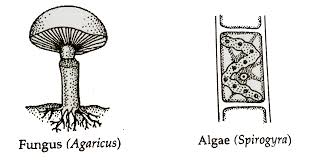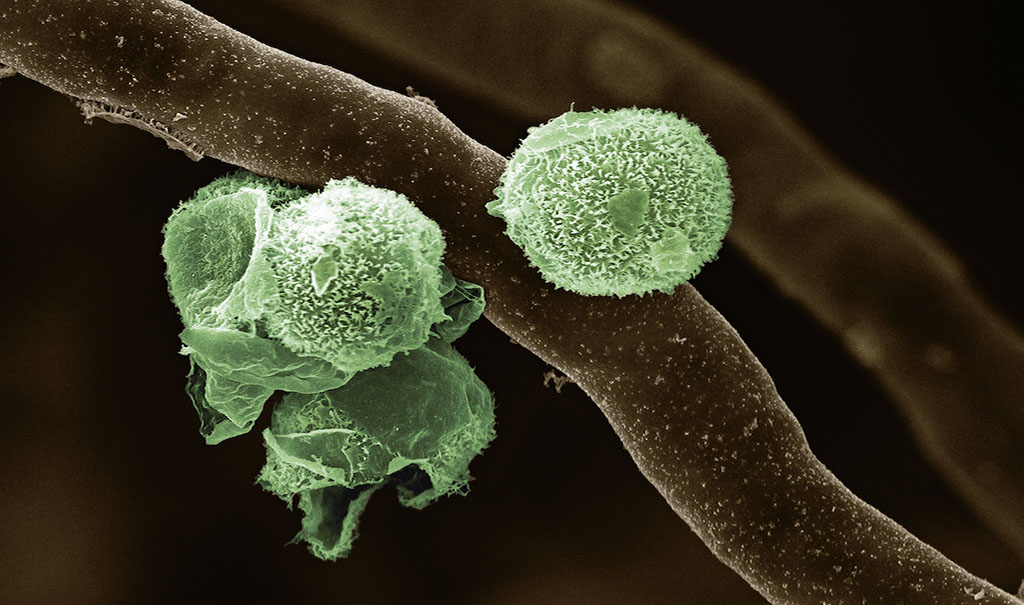Algae and fungi are both eukaryotic organisms that fall under the kingdoms Protista and Fungi, respectively. In addition to algae, the kingdom Protista also includes protozoans and molds. As primary producers and oxygen gas generators, algae are essential to ecosystems. Fungal hyphae, which are chains of cells, are how fungi grow. Though both Algae and fungi produce thallus, they differ primarily in that fungi are heterotrophs, receiving organic material from sources in the external environment while algae are autotrophs and have chlorophyll for photosynthesis.
Differences Between Algae and Fungi
1. Kingdom
Algae: Algae are members of the Protista kingdom.
Fungi: Fungi belong to the kingdom Fungi.
2. Habitat
Algae : Most algae are aquatic. They can be discovered in both fresh and saltwater.
Fungi: Fungi live on land. They are typically found on dead stuff that is adequately warm and damp.
3. Prokaryotic/Eukaryotic
Algae: Cyanobacteria are prokaryotic algae. Other algae are eukaryotes.
Fungi: All types of fungi are eukaryotes.
4. Chlorophyll and Other Photosynthetic Pigments
Algae: Algae possess chlorophyll for photosynthesis.
Fungi: Fungi lack pigments necessary for photosynthetic activity.
5. Nutrition Mode
Algae: Because they have chlorophyll and other photosynthetic pigments, algae are autotrophs.
Fungi: Fungi are heterotrophs, digesting external food by secreting enzymes.
6. Darkness
Algae: Algae cannot survive in the dark.
Fungi: Fungi can survive in complete darkness.
7. Cell Wall
Algae: Cellulose makes up the majority of the cell walls of algae.
Fungi: Chitin makes up the cell walls in fungi.
8. Storage of Food
Algae: Algae store starch as a kind of food.
Fungi: Fungi store food in the form of glycogen and oil globules.
9. Body
Algae: The bodies of algae are parenchyatous or filamentous.
Fungi: Fungal body is filamentous or pasedo-parenchymatous.
10. Uni/Multinucleated
Algae: Algae contain uninucleated cells.
Fungi: Some fungi have cells with several nuclei.
| Character | Fungi | Algae |
| Meaning of names. | The word “Fungus” means “Sponge”. | The word “Alga” means “Seaweed”. |
| Kingdom | Fungi belong to the kingdom Fungi. | Algae belong to the kingdom Protista. |
| Habitat | They are terrestrial and mostly found on the dead matter with proper warmth and moisture. | They are mostly aquatic and found in both fresh and marine water. |
| Prokaryotes/Eukaryotes. | All fungi are eukaryotes. | Only Cyanobacteria are prokaryotic algae. Other algae are eukaryotes. |
| Photosynthetic Pigments | It does not possess any photosynthetic pigment. | It possesses chlorophyll for photosynthesis. |
| Nutrition | Fungi are heterotrophs, they digest external food by secreting enzymes. | Being an autotroph, algae possess chlorophyll and other photosynthetic pigments. |
| Darkness | They can live in the dark. | They cannot live in the dark. |
| Food Storage | It stores food in the form of glycogen and oil globules. | It stores food in the form of starch. |
| Cell Wall | The cell wall is composed of chitin. | The cell wall is composed of cellulose. |
| Nucleated | It consists of multinucleated cells. | It consists of uninucleated cells. |
Similarities Between Fungi and Algae
Algae and fungi share certain characteristics;
- Both algae and fungus lack vascular tissues.
- Their cells are both eukaryotic.
- Both algae and fungi engage in asexual reproduction through fragmentation.
- Reproductive organs are not covered for protection.

Conclusion
In terms of structure and mode of nutrition, algae and fungi are very different. However they do coexist as lichens in a symbiotic relationship.
